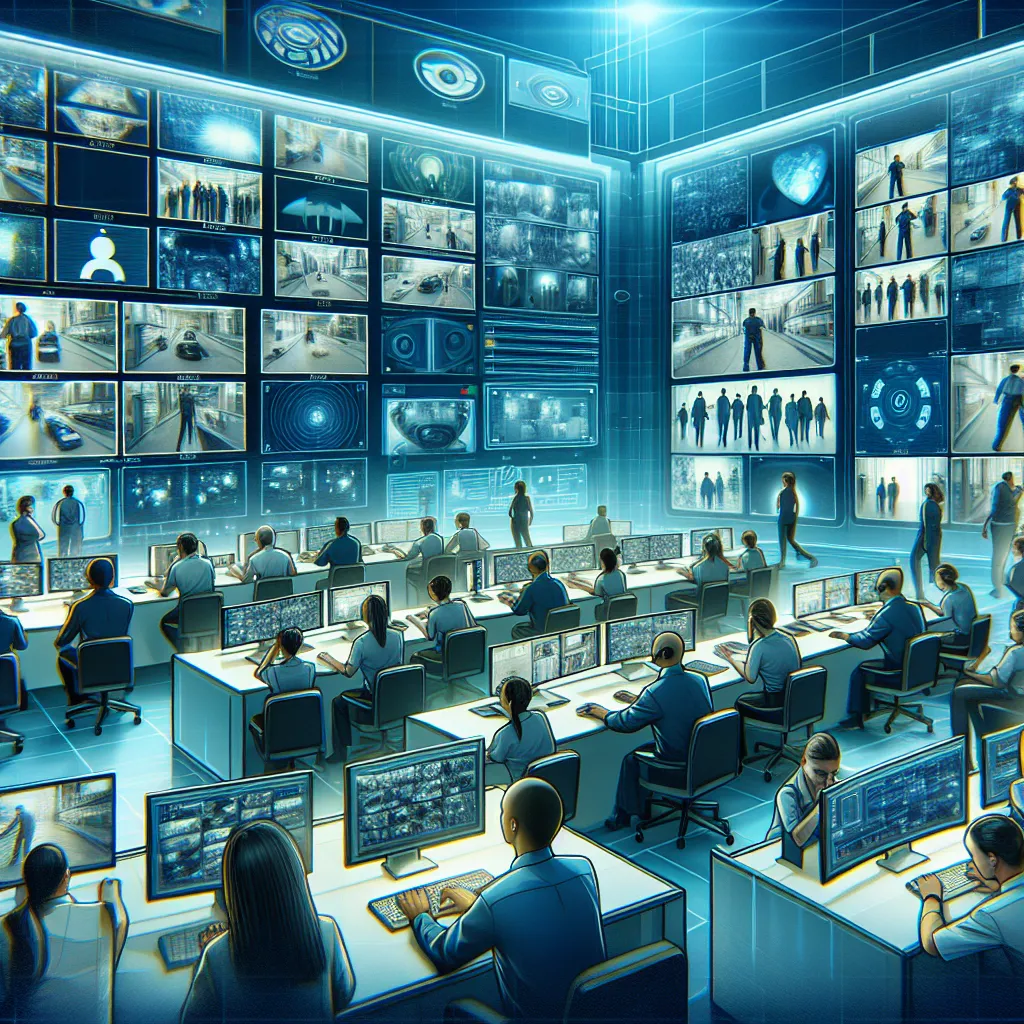Revolutionizing Security: Exploring the World of Video Surveillance Technology
Revolutionizing Security: Exploring the World of Video Surveillance Technology
In today’s fast-paced and ever-changing world, security has become a paramount concern for individuals, businesses, and governments alike. The increasing need for effective security measures has led to the development and advancement of video surveillance technology, which has proven to be a game-changer in safeguarding people and property. This article delves into the fascinating world of video surveillance technology, exploring its history, benefits, and future possibilities.
History of Video Surveillance Technology
Video surveillance technology has come a long way since its inception. The first closed-circuit television (CCTV) system was introduced in 1942 by German engineer Walter Bruch. This early system used analog cameras connected to a monitor, allowing for live monitoring within a limited area.

Over the years, the technology evolved, with the introduction of digital video recorders (DVRs) in the 1990s. DVRs replaced the traditional analog tape recorders, enabling the storage and retrieval of video footage in a more efficient and convenient manner.
Advancements in video compression algorithms, such as H.264 and H.265, further improved the storage and transmission capabilities of surveillance systems. These compression techniques significantly reduce the file size of video recordings without compromising the quality, making it easier to store and transmit large amounts of surveillance footage.
Moreover, the integration of artificial intelligence (AI) and machine learning algorithms has revolutionized video surveillance technology. AI-powered video analytics enable automated object detection, facial recognition, and behavior analysis, enhancing the effectiveness and efficiency of surveillance systems.
Benefits of Video Surveillance Technology
The adoption of video surveillance technology offers numerous benefits in various sectors. Let’s explore some of the key advantages:
Crime Prevention and Detection
Video surveillance acts as a powerful deterrent against criminal activities. The presence of visible cameras can discourage potential criminals from targeting an area, as they are aware of being recorded. In case of any incident, the recorded footage becomes invaluable evidence for investigations and prosecutions.
Public Safety and Crowd Management
Video surveillance systems are crucial for ensuring public safety and managing crowded areas, such as airports, train stations, and stadiums. By monitoring the flow of people and identifying any suspicious behavior or potential threats, security personnel can respond promptly and prevent any untoward incidents.
Employee Monitoring and Productivity
For businesses, video surveillance technology not only helps in preventing theft and unauthorized access but also allows employers to monitor employee behavior and productivity. This can promote a safer work environment, discourage misconduct, and enhance overall efficiency.
Traffic Control and Management
Video surveillance technology plays a vital role in traffic control, allowing authorities to monitor road conditions, detect traffic violations, and manage congestion. With the help of intelligent video analytics, traffic management systems can optimize traffic flow, alleviate bottlenecks, and improve overall road safety.
Remote Monitoring and Access Control
Modern video surveillance systems provide remote monitoring capabilities, enabling users to access live or recorded footage from anywhere at any time. This allows for real-time monitoring of critical areas, such as homes, offices, or industrial sites, even when individuals are physically absent.
The Future of Video Surveillance Technology
The future of video surveillance technology looks incredibly promising, with several exciting advancements on the horizon:
Artificial Intelligence and Video Analytics
AI-powered video analytics will continue to evolve, enabling surveillance systems to automatically detect and analyze complex scenarios. Facial recognition algorithms will become even more accurate, enhancing security measures in public spaces and aiding law enforcement agencies in tracking down suspects.
High-Resolution Imaging
Video surveillance cameras will continue to improve in terms of image quality, offering higher resolutions and enhanced clarity. This will provide investigators with more detailed and accurate footage for identification purposes.
Cloud-Based Storage and Remote Accessibility
Cloud-based storage solutions will become more prevalent, allowing for seamless and secure storage of extensive video footage. This will enable users to access their surveillance systems remotely, anytime, and from any device, offering greater convenience and flexibility.
Internet of Things (IoT) Integration
Video surveillance systems will increasingly integrate with other IoT devices, such as access control systems, alarms, and sensors. This integration will enhance the overall security infrastructure, creating a more comprehensive and interconnected network of devices.
In conclusion, video surveillance technology has revolutionized the field of security, providing individuals, businesses, and governments with powerful tools to protect people and property. With continuous advancements in AI, high-resolution imaging, cloud-based storage, and IoT integration, the future of video surveillance technology holds immense potential in ensuring safety and security on a global scale.
